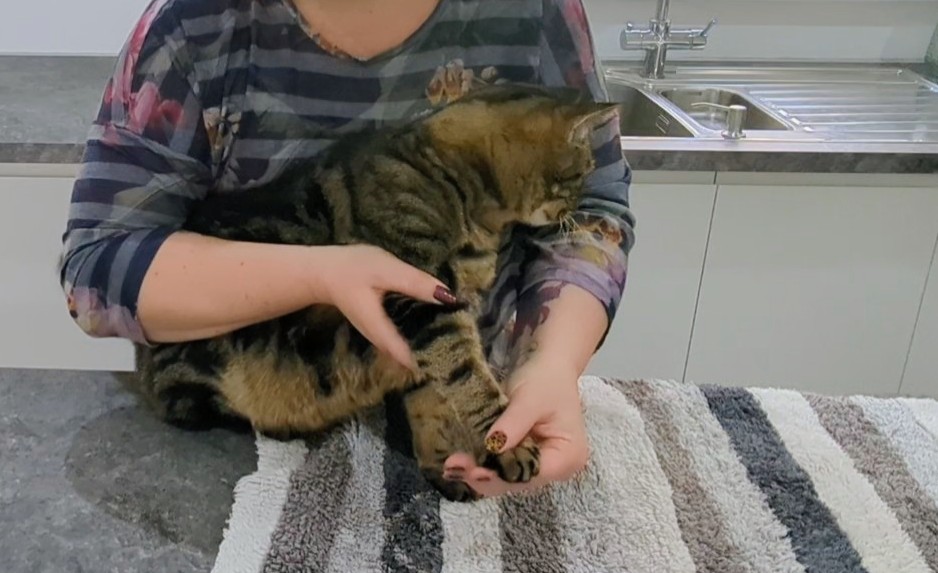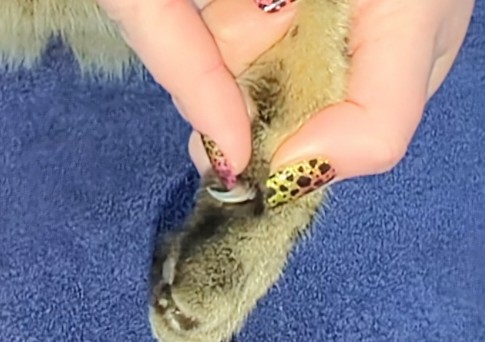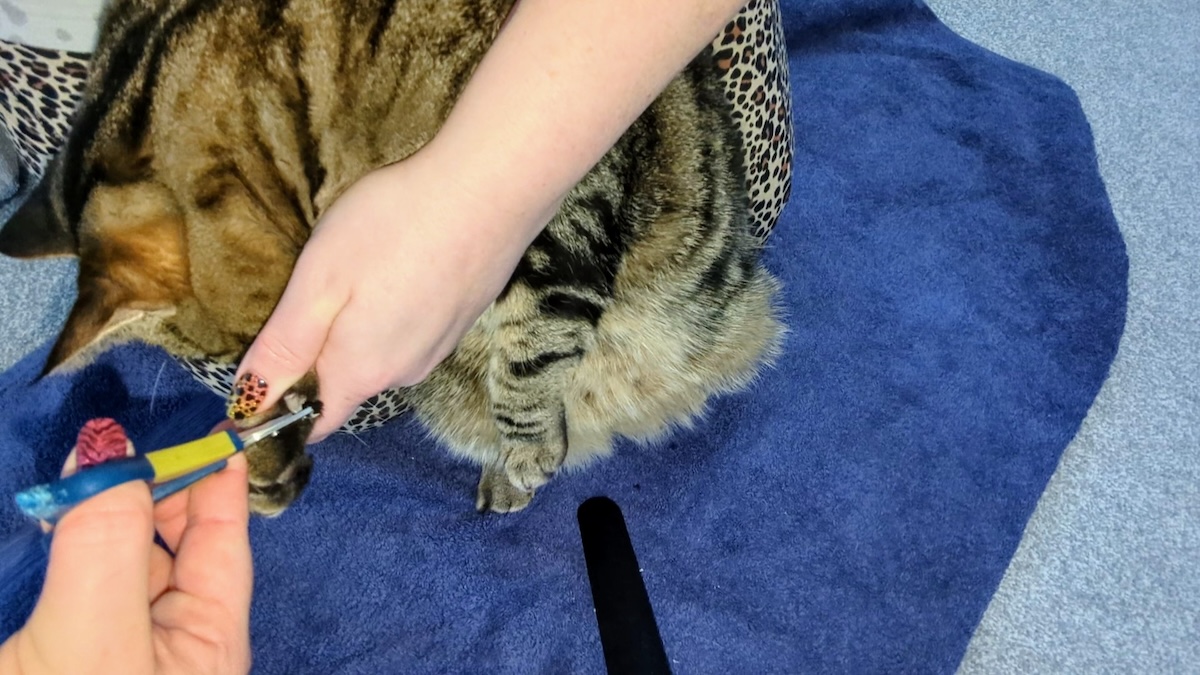Hi, I’m Dr. Karyn! Read my introduction to learn more about me and meet my five funny cats: Clutch, Cyril, Alex, Zelda, and Zazzles.
There is a good chance that your cat is going to need his claws cut at some point, if not on a regular basis. If they spend a lot of time outdoors, it’s not wise to trim them too often, as they are important tools for hunting, climbing, and defense. If you have an indoor kitten, keeping their nails shorter can prevent them from snagging on carpets and clothes, and give your furniture a fighting chance. Another reason a nail clip can be very useful is if you have to do anything your cat doesn’t like, such as cleaning their ears, giving medicine, or giving them a bath. It may not stop them from lashing out, but it can mean the difference between a nasty cut and a shallow graze.
Some cats are really tolerant of the occasional mani/pedi, others need a little more convincing, and some are best left to the professionals. With five indoor cats, nail trims are a pretty regular occurrence in my house, so I thought I’d take the opportunity to share some pointers on how to do it right.
Prepare Yourself to Win
Preparation is the key to success, and before you grab the nail clippers, check out my article and video on how to safely restrain your cat.
Clipping claws is usually a two-person job, but with a relaxed cat and the right technique, you can master this task on your own. Choose a quiet place where you can safely restrain your cat on a table or on your lap, depending on how agreeable they are, and make sure you have everything you might need before you start:
Place a towel on any table to prevent slipping, as it will make your cat safer.
If you’re not sure if your clippers are sharp enough, cut off the end of a piece of raw spaghetti – if it cuts smoothly and easily, you’re good to go!
Less is More
This is for your restraint method, and how much to cut.
If you’ve seen my tips on keeping cats at bay, you’ll know that I’m not the biggest fan of cats wrapping themselves in towels, but for some, it’s the only safe option. Instead, I’ve found that using steady, confident hands placed strategically, you’re more likely to get the results you want.
When it comes to cutting nails, the biggest mistake people make is trying to hold or control the foot by the tip of the foot. The best way to immobilize the foot is by holding the elbow or ankle (tarsal joint) to prevent your cat from pulling on the foot. It’s more comfortable for them and more effective for you.

The biggest concern and danger with any nail trimming is cutting the nail too short. If you’re new to this, it’s best to play it safe and just take a few millimeters at a time until you feel more confident. Familiarize yourself with paw and claw anatomy, and take some time to examine your cat’s feet when you’re not going at them with a pair of nail clippers!
A quick on a cat’s nail usually extends about 3-4 mm from the nail bed, but if you can’t see it, the safest way is to just cut the part of the nail that is very narrow and curved.

Trust is Everything
Cats know when we’re nervous or lacking confidence, so believe in your abilities, or fake it till you make it! Shaky hands and hesitant movements will result in an anxious cat, so prepare for the worst but plan for success!
Know When You’ve Been Beaten
Even with my experience as a vet, and having many cats over the years, there are times when one of my cats, usually Zelda or Alex, will start to bother that it’s not worth the trouble. Better to walk away as friends and try another day, than end up scratching and fretting, with a cat that wants nothing to do with you. Some cats have a limit, and you can only do one paw before they call ‘game over’. I would rather do mini-claw clips more often than risk traumatizing or hurting your cat or yourself.

No claw clip deserves to hurt you or your cat, or ruin your relationship with them, so if an at-home manicure doesn’t work, don’t sweat it! Your veterinarian or professional groomer can help.
Join us next week when we discuss ear cleaning!




